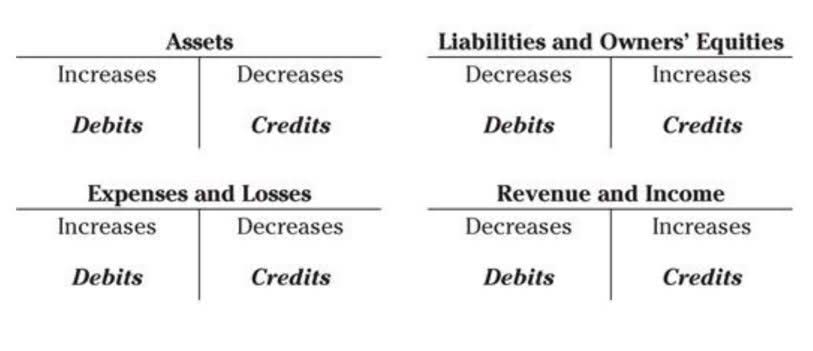What are retained earnings?

This can include everything from opening new locations to expanding existing ones. Get instant access to video lessons taught by experienced investment bankers. Learn financial statement modeling, DCF, M&A, LBO, Comps and Excel shortcuts. For our retained earnings modeling exercise, the following assumptions will be used for our hypothetical company as of the last twelve months (LTM), or Year 0.
- For instance, a company may declare a $1 cash dividend on all its 100,000 outstanding shares.
- The amount of retained earnings that a corporation may pay as cash dividends may be less than total retained earnings for several contractual or voluntary reasons.
- This indicates that after accounting for dividends and net income, the company’s retained earnings have increased to $140,000.
- The ultimate goal as a small business owner is to make sure you accumulate these funds.
- By identifying and utilising RE effectively, businesses can fuel growth, enhance financial stability, and attract stakeholders’ confidence.
- For instance, if you prepare a yearly balance sheet, the current year’s opening balance of retained earnings would be the previous year’s closing balance of the retained earnings account.
As a result, companies that retain a large portion of their profits often see their stock prices increase over time. Retained earnings isn’t as straightforward as it may not be advantageous to maximize retained earnings. A company may decide it is more beneficial to return capital to shareholders in the form of dividends. A company may also decide it is more beneficial to reinvest funds into the company by acquiring capital assets or expanding operations. Most companies may argue that an idle retained earnings balance that is not being deployed over the long-term is inefficient.
Video Explanation of Retained Earnings
It can help determine if a company has enough money to pay its obligations and continue growing. Retained earnings can also indicate something about the maturity of a company—if the company has been in operation long enough, it may not need to hold on to these earnings. In this case, dividends can be paid out to stockholders, or extra cash might be put to use. At each reporting date, companies add net income to the retained earnings, net of any deductions. Dividends, which are a distribution of a company’s equity to the shareholders, are deducted from net income because the dividend reduces the amount of equity left in the company.

On the other hand, a low level of RE may suggest limited reinvestment capacity or financial challenges. An investor may be more interested in seeing larger dividends instead of retained earnings increases every year. Retained earnings result from accumulated profits and the given reporting year. Meanwhile, net profit represents the money the company gained in the specific reporting period.
How are RE’s reported in financial statements?
In some cases, the repurchase may be seen as a sign of confidence and could increase the company’s common stock price and stockholder equity. But if done incorrectly, it can negatively impact existing shareholders’ equity sections and repel potential investors, harming your bottom line. The accountant will also consider any changes in the company’s net assets that are not included in profits or losses (i.e., adjustments for depreciation and other non-cash items). Once you consider all these elements, you can determine the retained earnings figure. While paying dividends to shareholders is one way to use profits, aiming for higher retained earnings can be a more effective long-term strategy for creating shareholder value. From there, the company’s net income – the “bottom line” of the income statement – is added to the prior period balance.
This is the case where the company has incurred more net losses than profits to date or has paid out more dividends than what it had in the retained earnings account. Beginning Period Retained Earnings is the balance in the retained earnings account as at the beginning of an accounting period. That is the closing balance of the retained earnings account as in the previous accounting period. For instance, if you prepare a yearly balance sheet, the current year’s opening balance of retained earnings would be the previous year’s closing balance of the retained earnings account. Retained earnings are any profits that a company decides to keep, as opposed to distributing them among shareholders in the form of dividends.
When Is It Time to Pull Out of a Startup Investment? An Investor Reveals What Signs You Shouldn’t Ignore.
On the other hand, though stock dividends do not lead to a cash outflow, the stock payment transfers part of the retained earnings to common stock. For instance, if a company pays one share as a dividend for each share held by the investors, the price per share will reduce to half because the number of shares will essentially double. Because the company retained earnings represents has not created any real value simply by announcing a stock dividend, the per-share market price is adjusted according to the proportion of the stock dividend. It uses that revenue to pay expenses and, if the company sold enough goods, it earns a profit. This profit can be carried into future periods in an accounting balance called retained earnings.
- When reinvested, those retained earnings are reflected as increases to assets (which could include cash) or reductions to liabilities on the balance sheet.
- If the company had not retained this money and instead taken an interest-bearing loan, the value generated would have been less due to the outgoing interest payment.
- As stated earlier, there is no change in the shareholder’s when stock dividends are paid out.
- When a company loses money or pays dividends, it also loses its retained earnings.
- So, each time your business makes a net profit, the retained earnings of your business increase.
Less mature companies need to retain more profit in shareholder’s equity for stability. Revenue provides managers and stakeholders with a metric for evaluating the success of a company in terms of demand for its product. As a result, it is often referred to as the top-line number when describing a company’s financial performance. Since revenue is the income earned by a company, it is the income generated before the cost of goods sold (COGS), operating expenses, capital costs, and taxes are deducted.
